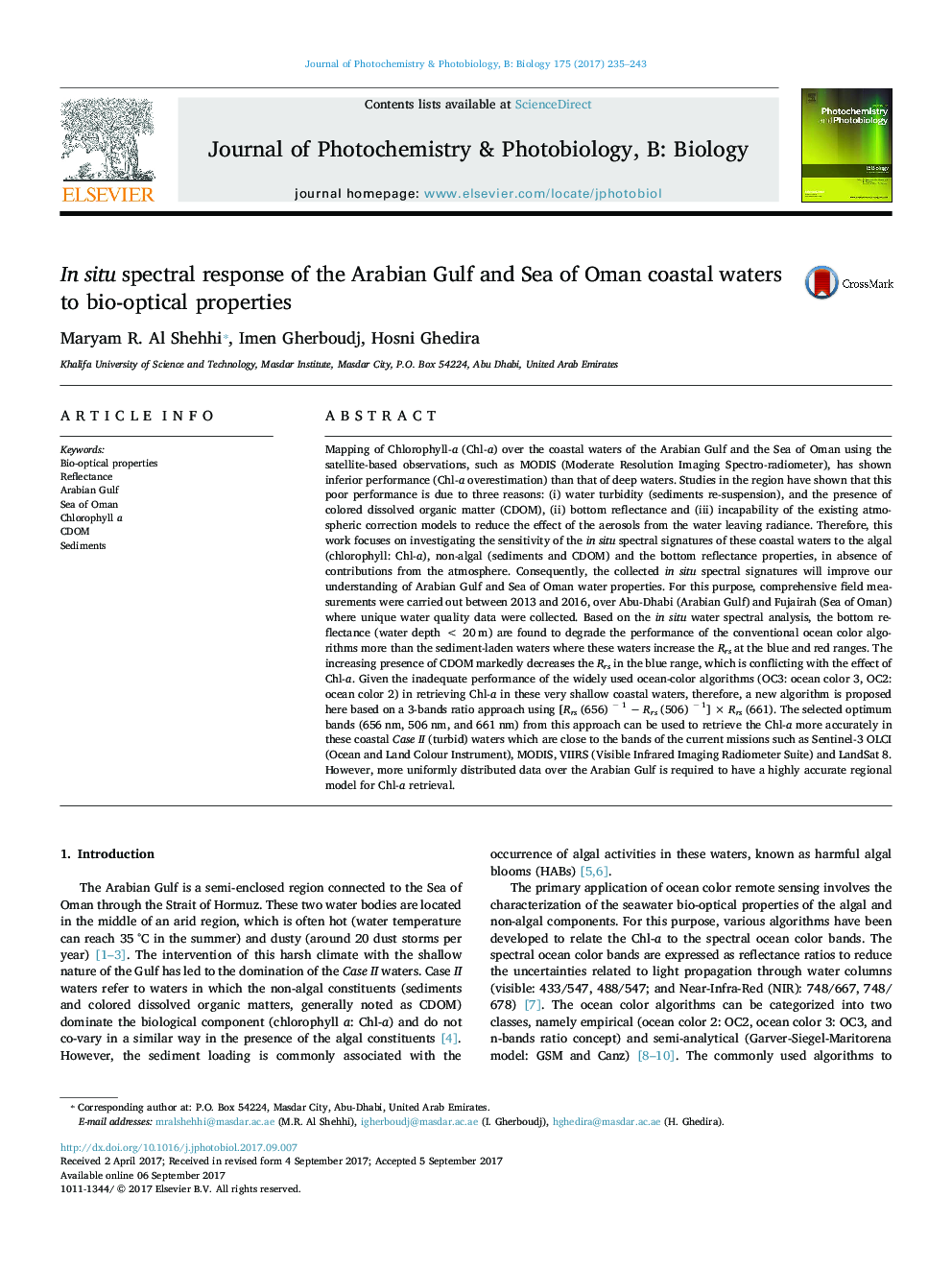| کد مقاله | کد نشریه | سال انتشار | مقاله انگلیسی | نسخه تمام متن |
|---|---|---|---|---|
| 6452555 | 1418058 | 2017 | 9 صفحه PDF | دانلود رایگان |
- Low performance of satellite Chl-a mapping in the shallow, coastal waters within the Arabian Gulf.
- The increase in the water depth and sediments increase the Rrs at the blue and red range.
- The increase in the CDOM load can highly decrease the Rrs at the blue range conflicting, therefore, the effect of Chl-a.
- The shallow water is found to degrade the performance of the ocean color algorithms more than the sediment-laden water.
- A three-band model is proposed to retrieve the Chl-a in the shallow coastal waters within this region.
Mapping of Chlorophyll-a (Chl-a) over the coastal waters of the Arabian Gulf and the Sea of Oman using the satellite-based observations, such as MODIS (Moderate Resolution Imaging Spectro-radiometer), has shown inferior performance (Chl-a overestimation) than that of deep waters. Studies in the region have shown that this poor performance is due to three reasons: (i) water turbidity (sediments re-suspension), and the presence of colored dissolved organic matter (CDOM), (ii) bottom reflectance and (iii) incapability of the existing atmospheric correction models to reduce the effect of the aerosols from the water leaving radiance. Therefore, this work focuses on investigating the sensitivity of the in situ spectral signatures of these coastal waters to the algal (chlorophyll: Chl-a), non-algal (sediments and CDOM) and the bottom reflectance properties, in absence of contributions from the atmosphere. Consequently, the collected in situ spectral signatures will improve our understanding of Arabian Gulf and Sea of Oman water properties. For this purpose, comprehensive field measurements were carried out between 2013 and 2016, over Abu-Dhabi (Arabian Gulf) and Fujairah (Sea of Oman) where unique water quality data were collected. Based on the in situ water spectral analysis, the bottom reflectance (water depth < 20 m) are found to degrade the performance of the conventional ocean color algorithms more than the sediment-laden waters where these waters increase the Rrs at the blue and red ranges. The increasing presence of CDOM markedly decreases the Rrs in the blue range, which is conflicting with the effect of Chl-a. Given the inadequate performance of the widely used ocean-color algorithms (OC3: ocean color 3, OC2: ocean color 2) in retrieving Chl-a in these very shallow coastal waters, therefore, a new algorithm is proposed here based on a 3-bands ratio approach using [Rrs (656) â 1 â Rrs (506) â 1] Ã Rrs (661). The selected optimum bands (656 nm, 506 nm, and 661 nm) from this approach can be used to retrieve the Chl-a more accurately in these coastal Case II (turbid) waters which are close to the bands of the current missions such as Sentinel-3 OLCI (Ocean and Land Colour Instrument), MODIS, VIIRS (Visible Infrared Imaging Radiometer Suite) and LandSat 8. However, more uniformly distributed data over the Arabian Gulf is required to have a highly accurate regional model for Chl-a retrieval.
Journal: Journal of Photochemistry and Photobiology B: Biology - Volume 175, October 2017, Pages 235-243
